19Oct
Native planting for shelter
WORDS & IMAGES SUPPLIED BY ENVIRONMENT CANTERBURY
You may remember the adage: “An animal resting in the shade is not doing what it is meant to be doing—eating grass and fattening up.” Things have come a long way since then and shelter has become one of the key components of animal welfare.
Native plants make great shelter for animals, while also providing a host of other benefits to you and your property:
- Lower maintenance;
- Less wind erosion;
- Increased biodiversity and habitat, including for pollinators;
- Resistance to drought, frost, and snow;
- Higher dry matter yields.
It is important to source your plants from local sources (eco-sourcing) as these plants will be best adapted for conditions in your local area.
Shelter planting to complement—not compete with—your irrigator
Stock shelter can be planted underneath the irrigator in a few different formations:
- Several straight rows dependent on prevailing wind;
- In circles, depending on track and paddock placement;
- As a row on the outside of your pivot, tall shelter that you hedge.
You need to allow a minimum two-metre wide fenced area for planting low shelter under the pivot, and 3.5 metres if planting tall shelter. Think about how your electricity will travel, as eventually the vegetation will grow into the fence—be careful you don’t short it out. A dense, low flax shelter which is fenced either side should keep out cattle even with no electricity.
Saving money by protecting what's there
Retaining existing native scrub and/or fencing off native scrub such as matagouri, kānuka and coprosma helps with stock and grazing management and provides cheap and resilient shelter.
Stock Exclusion
The National Environmental Standards for Freshwater include new stock exclusion rules to protect our lakes, rivers and wetlands. This will help build on the great work that has already been completed by many landowners in managing freshwater on their farms. The stock exclusion rules for wetlands, lakes, rivers (where the bed is wider than 1m anywhere in your land parcel) have been in place for new pastoral systems since 2020. Under this rule, all stock except sheep on new systems must be kept at least three metres from lakes and rivers. All dairy cattle on existing pastoral systems are required to be excluded from lakes and rivers by 1 July 2023, as are intensively grazed pigs, beef cattle and deer. Dairy support cattle have until 1 July 2025 before they too must be excluded.
Protecting wetlands
By 1 July 2025 stock must be excluded from wetland that supports a population of threatened species or are larger than 500-square-metres on low slope land. For full details on the stock exclusion rules, see our guide at ecan.govt.nz/stock-exclusion. There are many benefits to protecting wetlands on your property. They act like kidneys for our waterways, absorbing and filtering nutrients and sediment. They are also great for mitigating flood flows as they act like a sponge, slowing down overland flow of water.
If you are looking for further advice or assistance around biodiversity or land management call 0800 324 636 and our customer service team will put you in touch with one of our friendly advisors.
Low shelter plant species, perfect to grow under pivot irrigators
|
Species
|
Mature height (metres)
|
Spacing (metres)
|
Wildlife value
|
|
Shrub Pohuehue Muehlenbeckia astonii
|
2
|
1.5
|
berries
|
|
Mingimingi - Coprosma rigida
|
1
|
1.5
|
berries
|
|
Mingimingi - Coprosma propinqua
|
2
|
1.5
|
berries
|
|
Mingimingi - Coprosma rugosa
|
3
|
2
|
berries
|
|
Mingimingi - Coprosma virescens
|
2
|
1.5
|
berries
|
|
Tauhinu Ozothamnus leptophyllus
|
2
|
1.5
|
nectar
|
|
Toetoe Cortaderia richardii
|
2
|
1.5
|
Grain
|
|
Mountain Flax Phormium cookianum
|
1.5
|
1.5
|
nectar
|
|
Harakeke/NZ Flax – Phormium tenax
|
2.5
|
1.5
|
nectar
|
|
Korokio - Corokia cotoneaster
|
2.5
|
2
|
Berries and nectar
|
|
Koromiko Veronica (Hebe) - salicifolia
|
3
|
2
|
nectar
|
Fast-growing tall species, perfect for outside the pivot, filling paddock corners, or under irrigator end guns
|
Species
|
Mature height (metres)
|
Spacing (metres)
|
Wildlife value
|
Suitable for hedging
|
|
Lowland ribbonwood Plagianthus regius
|
12
|
3
|
nectar
|
|
|
South Island Kowhai Sophora microphylla
|
8
|
2
|
nectar
|
|
|
Narrow leafed lacebark Hoheria angustifolia
|
6
|
2
|
nectar
|
|
|
kānuka Kunzea ericoides
|
8
|
2
|
nectar
|
|
|
Maunka Leptospermum scoparium
|
4
|
2
|
nectar
|
|
|
Cabbage tree/ti kōuka Cordyline Australis
|
10
|
2
|
Nectar and berries
|
|
|
Karamu Coprosma robusta
|
5
|
3
|
berries
|
Yes
|
|
Kohuhu Pittosporum tenuifolium
|
6
|
3
|
Nectar
|
Yes
|
|
Lowland totara Podocarpus totara
|
15
|
6
|
Berries and Nectar
|
Yes
|
|
Broadleaf Griselinia littoralis
|
6
|
2.5
|
Berries
|
Yes
|
|
Akiraho - Golden Ake Ake Olearia paniculata
|
4
|
2.5
|
nectar
|
Yes
|
|
Twiggy Tree Daisy Olearia lineata
|
5
|
3
|
Nectar
|
Yes
|
|
Mountain Ake Ake Olearia avicenniaefolia
|
4
|
3
|
Nectar
|
Yes
|
Related

Micronutrient deficiencies can impact wheat yield and grain nutritional quality, but does applying m...
Read More
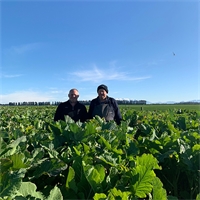
To find a successor to the hugely popular and widely regarded kale variety Sovereign is no easy task...
Read More
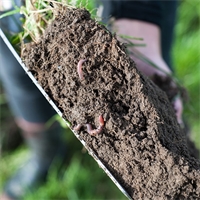
A fertile soil with physical health issues can still perform poorly, so it could be time for a physi...
Read More
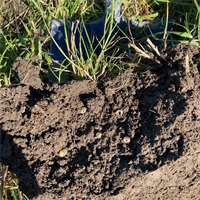
Grass grub larvae may be small, but as many farmers found in autumn 2021, they’re capable of causin...
Read More
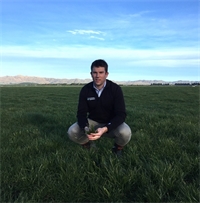
The latest perennial ryegrass from one of the country’s best-known pasture companies sets a new ben...
Read More
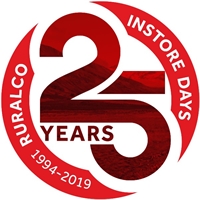
This is a very special year for Ruralco. It is 25 years since the very first Instore Days were esta...
Read More